|
|
Ship plans
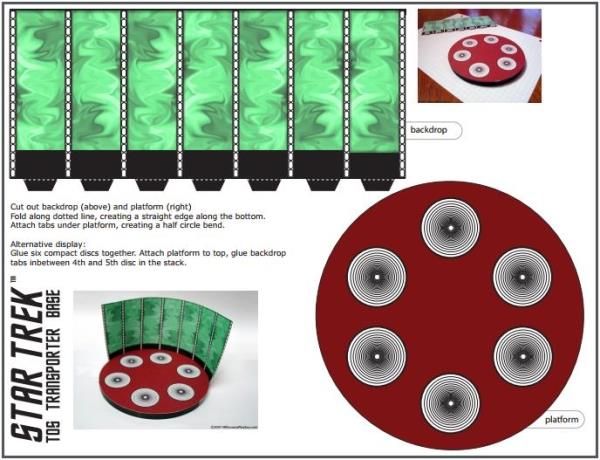
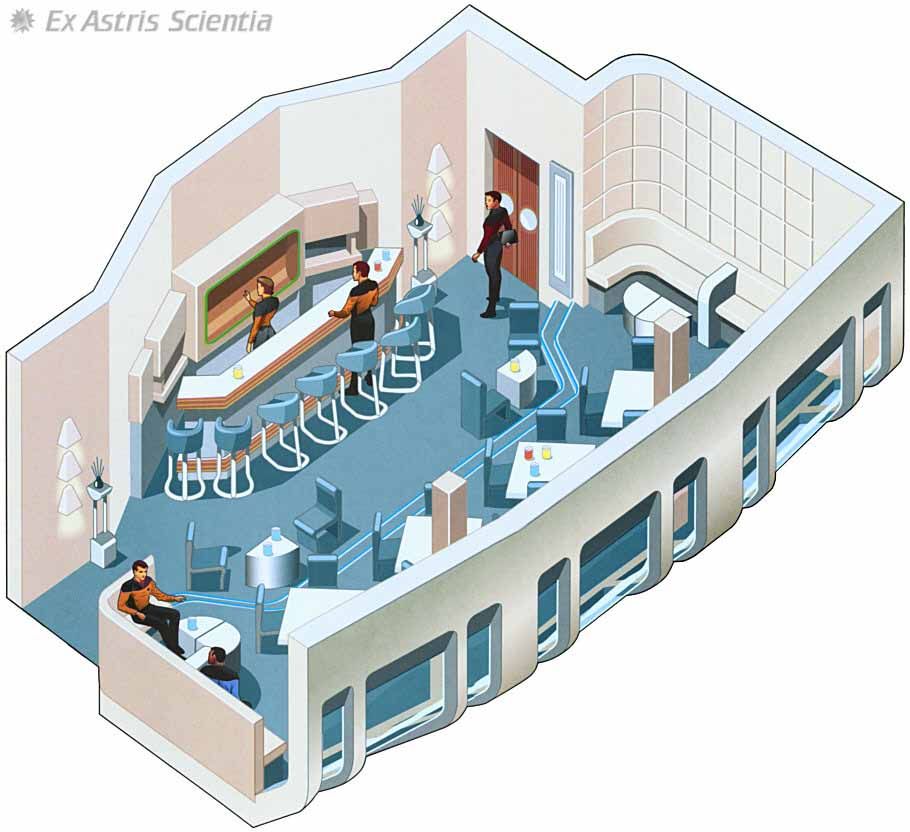
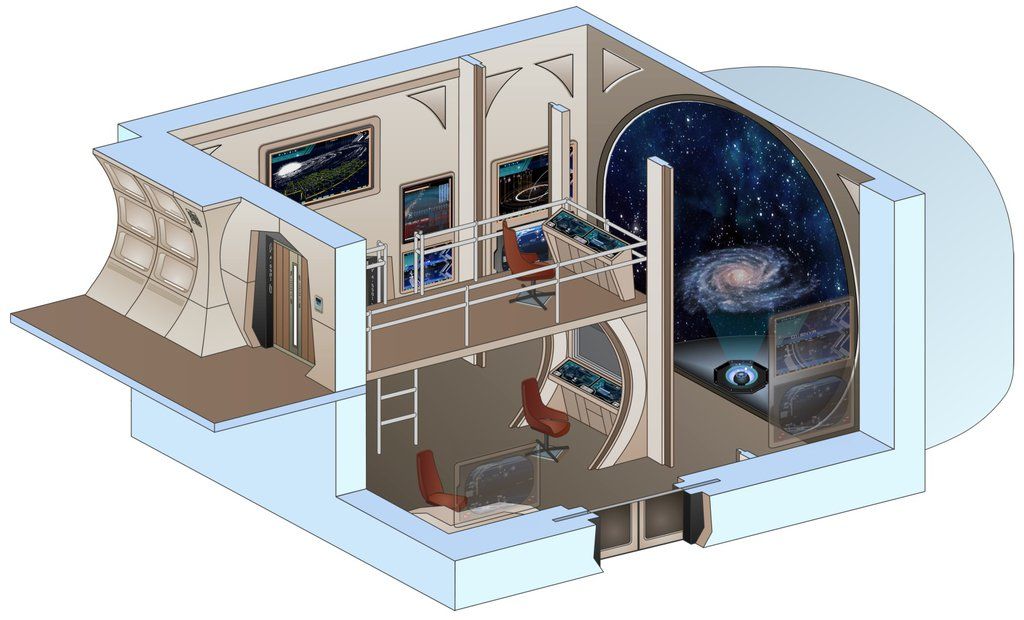
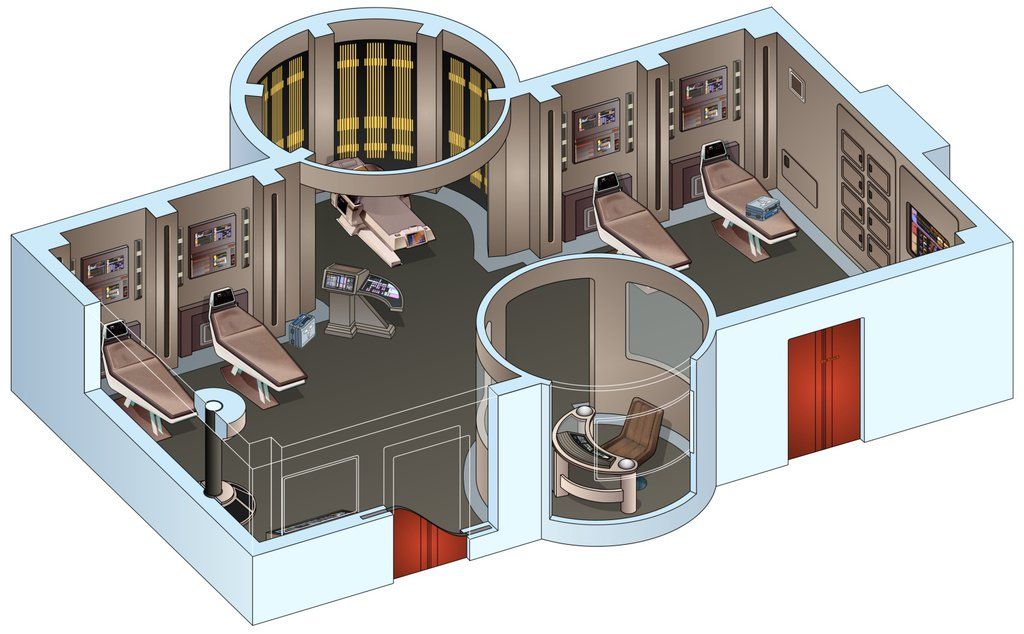
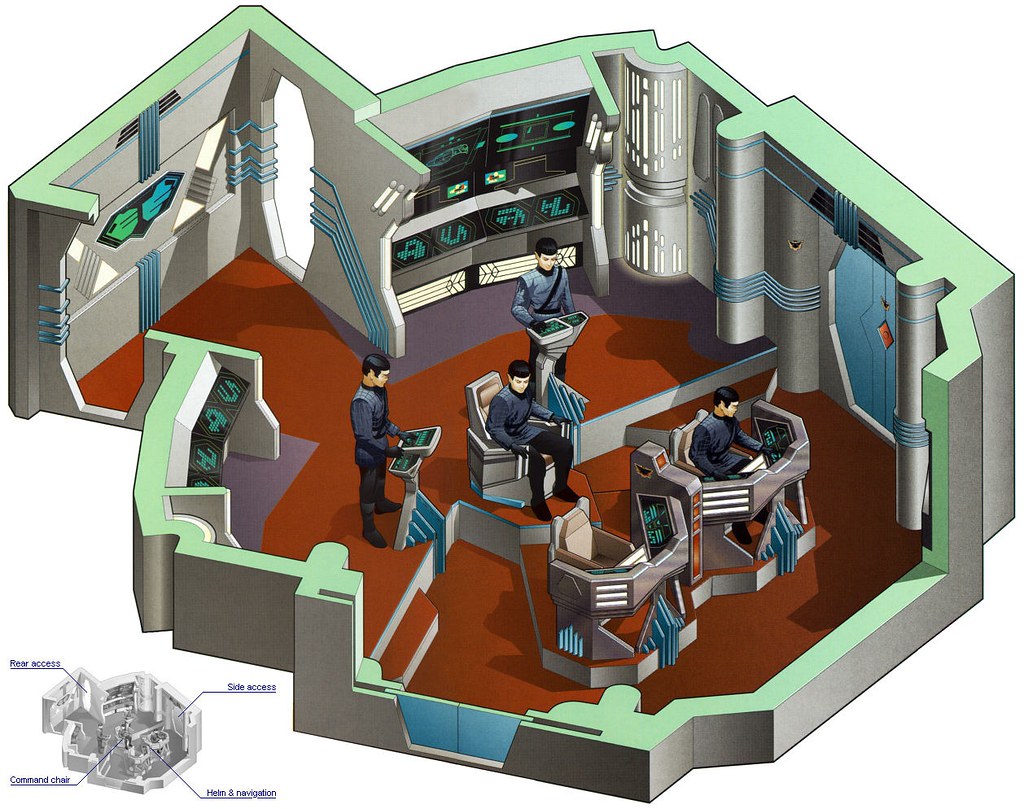

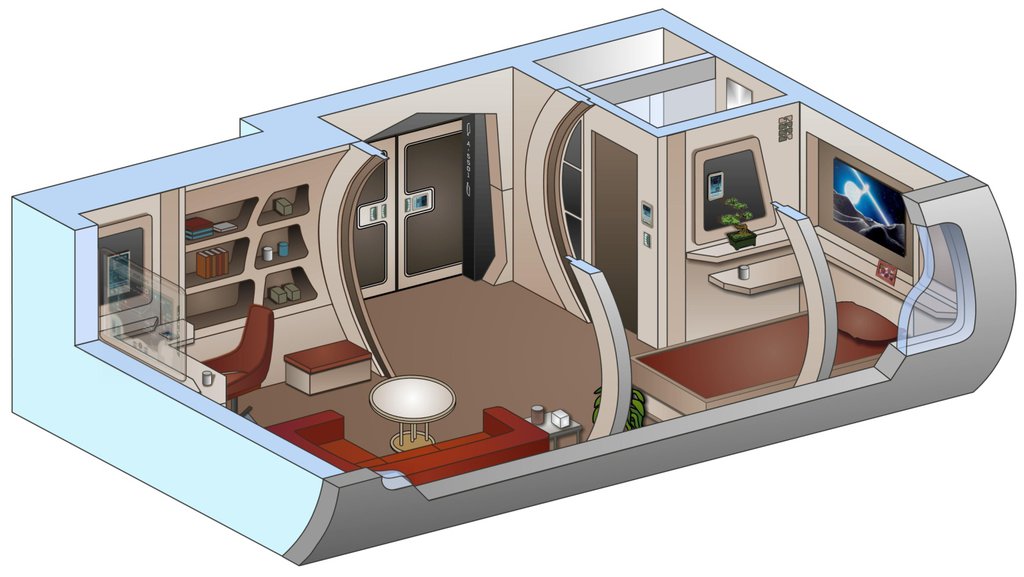
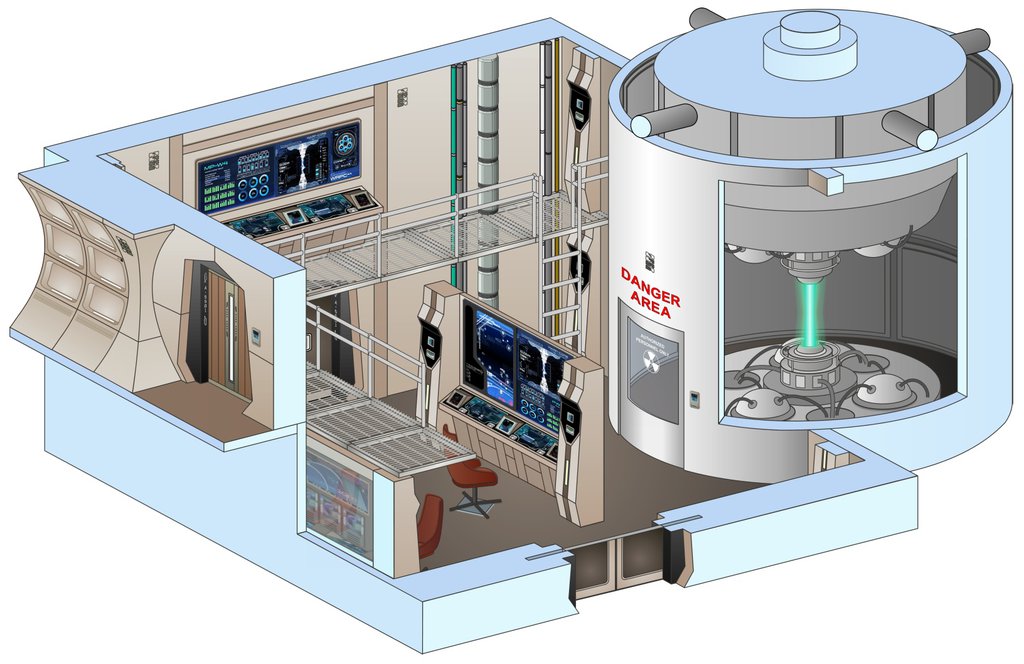

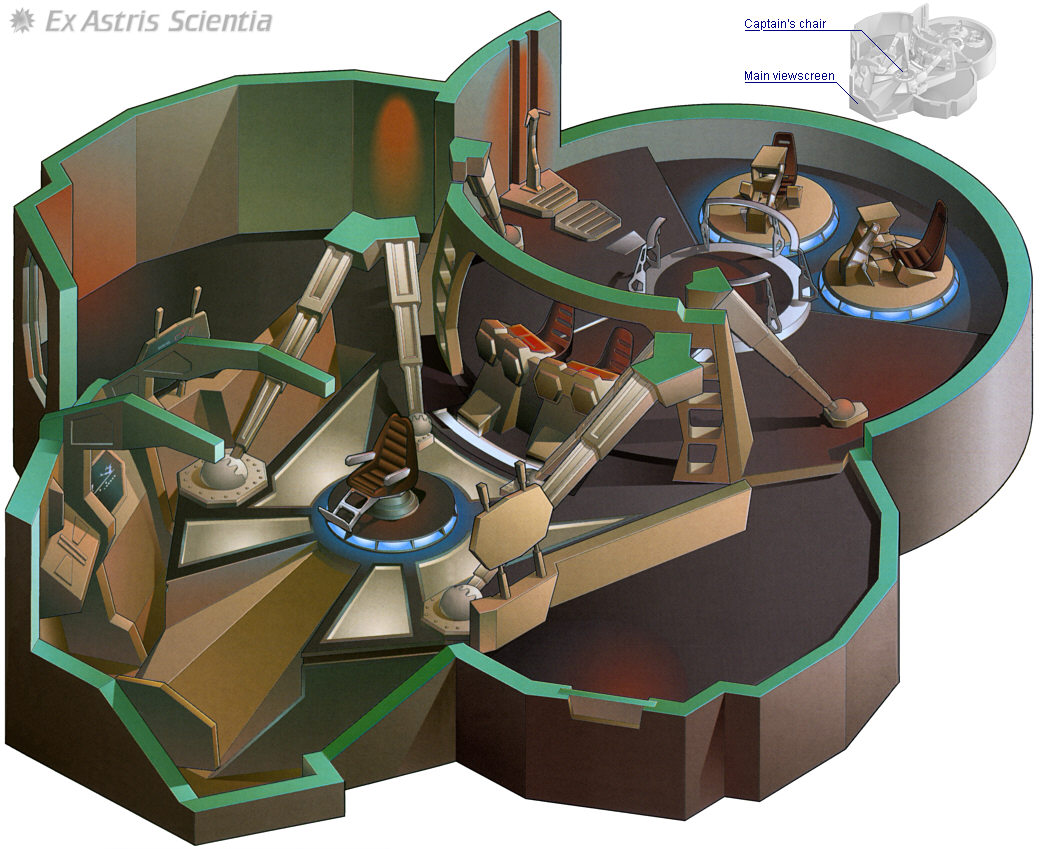
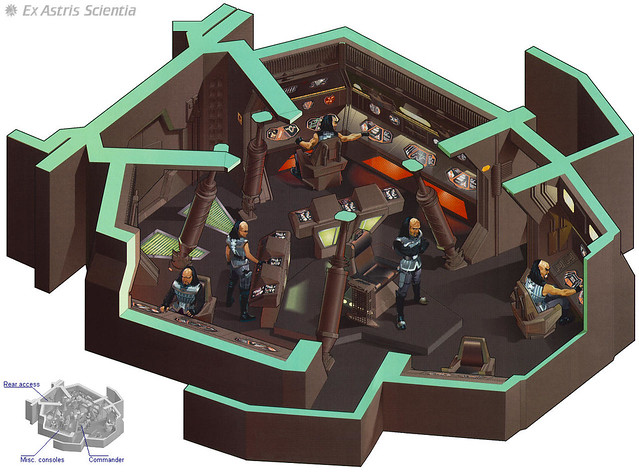

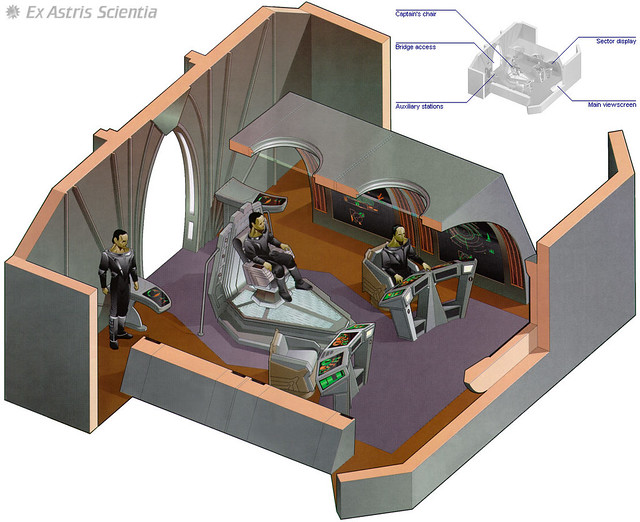
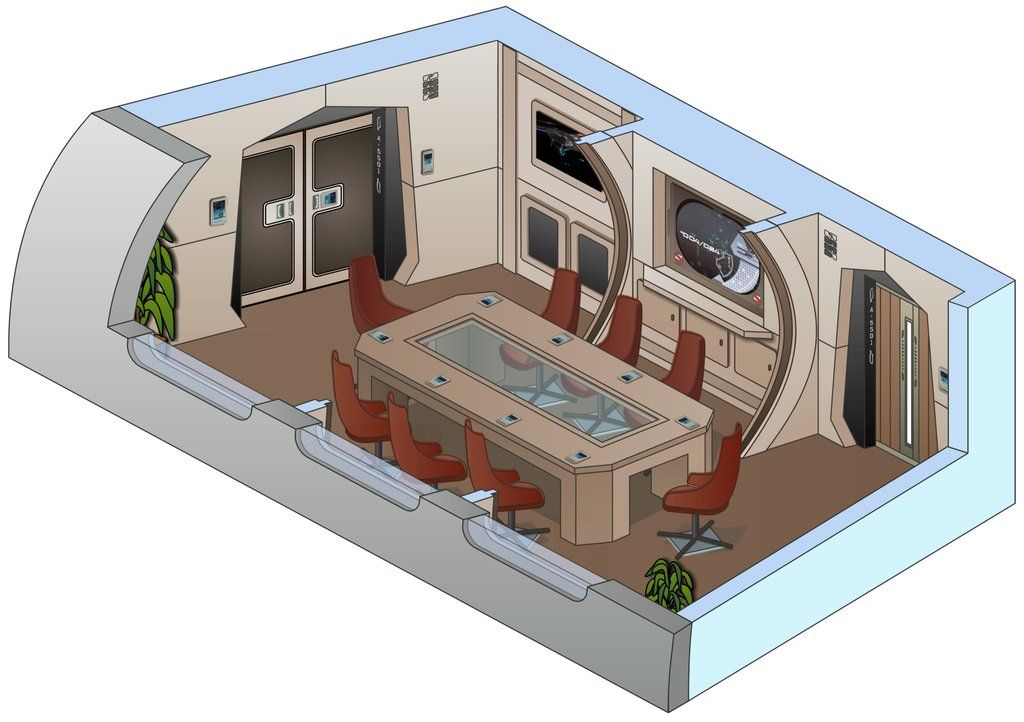


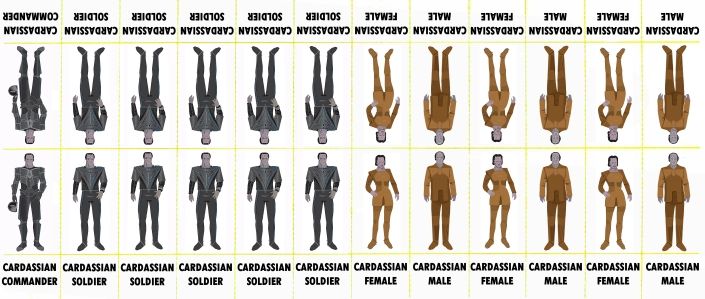
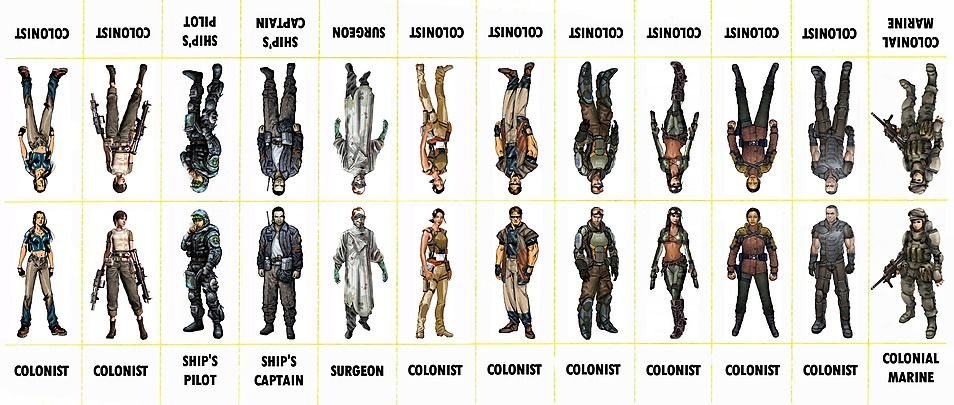
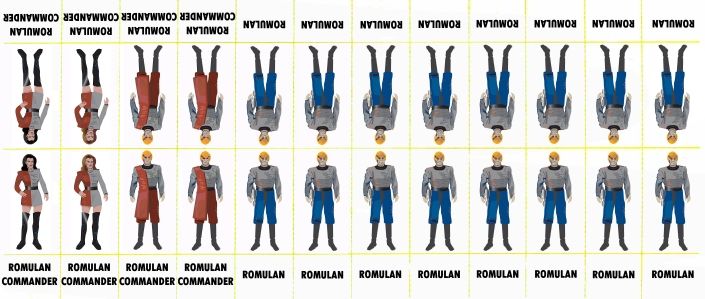
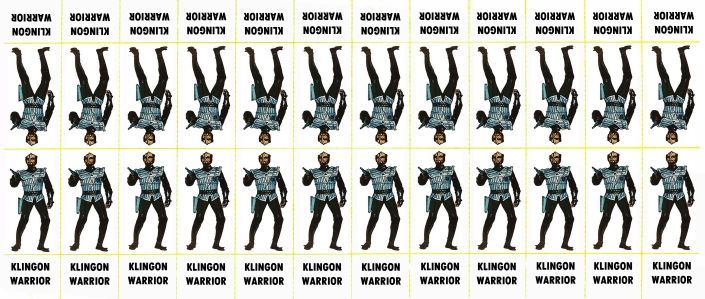
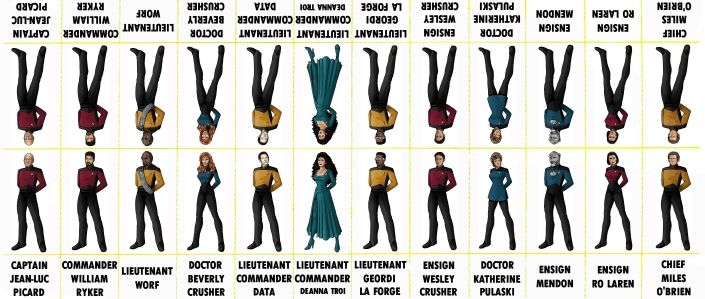
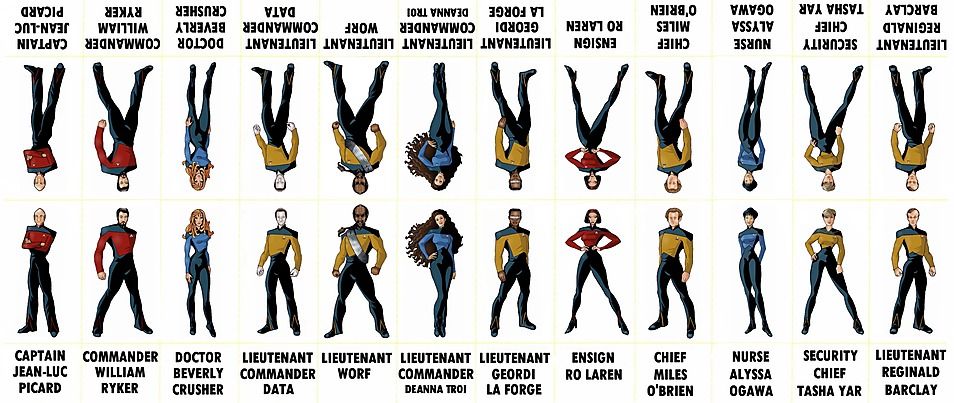
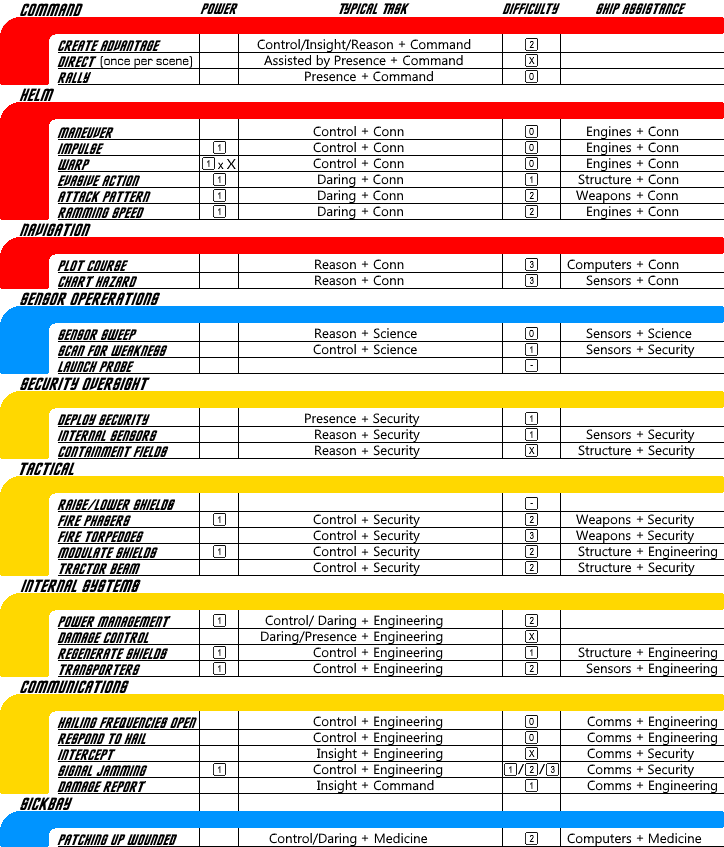
| Distances | |
| Distances in Starship combat are similar to Personal Combat, with 4 categories and one state. | |
| Contact is a state when an object or other Starship is touching the vessel. This is usually used mainly for ships docking with starbases and other facilities. Needless to say, unlike in Personal Combat, you won’t see that many ships going in a state of Contact in a fight as often. | |
| Close range is defined as the zone that the vessel is currently occupying. | |
| Medium range is defined as any adjacent zone to the vessel’s current zone. | |
| Long range is defined as objects and vessels two zones away. | |
| Extreme range is any vessels or objects beyond Long range. | |
| Warp | |
| Starships are capable of going to warp and travelling extremely quickly which means that they’re able to leave the vicinity of a battle at a moment’s notice. | |
| To go to warp, whichever character is at the Helm must spend one or more Power, and attempt a Difficulty 0 Control + Conn Task, assisted by the Starship’s Engines + Conn. The Power determines how quickly the ship is moving. If the Task is successful, the ship immediately leaves the area, which will normally end the scene, though the enemy might decide to pursue. A ship may not spend more Power to go to warp than its Engine score. | Max. Engine |
| Pursuing ships must spend more Power than the fleeing ship did. | |
| Distances and Sensors | |
| In ideal circumstances, Starships can scan and detect objects, vessels and phenomena over a certain size or magnitude for several light years away in every direction. The closer an object is, the more clarity and detail can be detected. | |
| Movement and Terrain | |
| Movement in Starship combat is the job of the Helmsman, and is typically a Difficulty 0 Task. Difficulty for movement can increase if the space that the vessel is moving through is hindering or hazardous in any way. | |
| Hindering or hazardous terrain will often have a Scale of its own, this represents the maximum scale of vessel that can traverse that terrain safely. If a ship equal to or less than the scale of the hazard, then the ship suffers no penalties. | |
| Bridge Positions, Combat Tasks and Minor Actions | |
| In any given turn, any character can attempt a single Task and several Minor Actions. Unlike in Personal Combat, however, the kinds of Tasks that a character is likely to perform is limited based on their position on the ship, and different officers will be given access to different systems as befits their positions. | |
| Minor Actions | |
| These Minor Actions are common to Starship operations. A character can still perform other personal combat Minor Actions as necessary. | |
| Interact – The character interacts with an object in the environment. | |
| Change Position – The character moves to any other station on the bridge, or other location on the ship to take charge of that station. If the character is moving elsewhere on the ship, they arrive at their intended location at the start of their next turn. | |
| Prepare – The character prepares for or spends time setting up for a Task. | |
| Raise / Lower Shields (Tactical Only) – The character raises or lowers the ship’s Shields. | |
| Restore – The character performs the minor repairs and adjustments necessary to restore a system after disruption or minor damage. | |
| Tasks | |
| A character can normally attempt a single Task during each turn, but as with Personal Combat, they may also perform a second task via the use of Determination, Momentum or Leadership. | |
| The following Tasks can be performed by any character during Starship combat, regardless of their role. Personal Combat tasks may also be attempted where relevant, such as when repelling borders. | |
| Assist – Perform an activity that will grant an ally advantage. During the nominated ally’s Task, the character provides assistance as normal for assisting in a Task. | |
| Create Advantage – With a Difficulty 2 Task check, the character attempts to create a favorable circumstance that benefits their side. Depending on how this is being done, the Ship may assist this Task. | |
| Pass – The character chooses to not attempt a Task. If the character takes no Minor Actions, then the character does not count as having taken a Turn, and may act later in the round instead. | |
| Ready – The character declares that they are waiting for a particular situation or event to occur before attempting a Task. When this triggering situation occurs, the character interrupts the acting character’s turn to resolve the readied Task. If the triggering situation does not occur, then the readied action is lost. | |
| Other Tasks – A range of other Tasks might be performed in a combat. Circumstances or objectives might dictate that the character needs to repair or disable equipment, for example, or to perform other activities that don’t relate to the fighting. | |
| Override – The character overrides the controls of another role. The character may attempt a Task from any other role other than commanding officer, but increasing the Difficulty by one due to sub-optimal controls. | |
| Positions and Specific Tasks | |
| The most important Tasks attempted during starship combat are reserved for characters at particular positions, which are both a physical location and a set of accompanying responsibilities. | |
| These positions are: | |
| Commanding Officer – The CO makes the decisions based off information available | |
| Helm – The Helmsman is the pilot of the ship and is responsible for all Tasks that require the ship’s movement and maneuvering | |
| Navigator – The navigator is in charge of plotting the ship’s course and determining the spatial conditions that would affect the ship along its course. | |
| Sensor Operations – Sensor operations, usually handled by a Science Officer, are used to control the many and varied external sensor systems used to scan planets, spatial phenomena, other vessels and others. It also covers interpreting and analyzing that information. | |
| Security Monitor – This station covers all matters of internal security, such as containment fields, deployment of personnel and internal sensors. | |
| Tactical Systems – This station covers the operation of weapons and shields. | |
| Communications – This station covers all incoming and outgoing communications, including encryption and decryption of messages. | |
| Internal Systems Control – This station covers any miscellaneous monitoring and control of internal systems such as damage control, transporters and life support. | |
| Each of these positions are given anywhere from three to six unique Tasks that fall under their purview. To go over each of them here would be huge (and potentially spoil all the goodness) but I’ll detail one to give people an idea: | |
| Helm Tasks | |
| Maneuver – The flight controller uses the ship’s thrusters to adjust position and moves to anywhere within Medium range. | |
| Impulse – The flight controller uses the ship’s impulse engines to adjust position and move to anywhere within Long range. This has a Power Requirement of 1. | 1 |
| Warp – The flight controller uses the ship’s warp drive to move two or more zones. This has a Power requirement equal to the number of zones to be moved. This represents short bursts of warp speed, rather than longer journeys. | |
| Evasive Action – The flight controller moves swiftly and unpredictably, attempting to foil enemy targeting with a Difficulty 1 Daring + Conn Task, assisted by the ship’s Structure + Conn. If successful, until the flight controller’s next Turn, all attacks against the ship, and all attacks made by the ship increase their Difficulty by 1. This has a Power requirement of 1. | 1 |
| Attack Pattern – The flight controller takes a course that will make it easier to target the enemy. The flight controller attempts a Difficulty 2 Daring + Conn Task, assisted by the ship’s Weapons + Conn. If successful, until the flight controller’s next Turn, all attacks made by the ship reduce in Difficulty by 1 (to a minimum of 1; if already at 1, then gain one bonus momentum instead). This has a Power requirement of 1. | 1 |
| Ramming Speed – the flight controller chooses a single enemy vessel or other target within Long range, and moves towards them at full speed. This is an attack, requiring a Difficulty 2 Daring + Conn Task assisted by the ship’s Engines + Conn. This Difficulty increases by 1 for every range category beyond Close the target is. If successful, the attack inflicts a number of [CD] damage equal to 2 plus the ramming ship’s Scale, with the Spread and Vicious 1 effects, and the Devastating quality. However the ramming ship also suffers a number of [CD] damage equal to the target’s Scale, with the Spread and Vicious 1 effects, and the Devastating quality. This has a Power requirement of 1. | 1 |
| Making an Attack | |
| Making an attack with a ship has the following steps: | |
| 1. The attacker chooses the weapon system they plan to attack with, usually between energy weapons or torpedoes | |
| 2. The attacker then nominates a viable target. If the attacker is attempting to target a specific system, then the chosen system should be declared here. | |
| 3. The attacker attempts a Control + Security Task, assisted by the ship’s Weapons + Security, with a Difficulty of 1 for Energy Weapons, and 2 for Torpedoes. If a specific system is chosen, increase the Difficulty by 1. In addition, if the target is not in optimal range, the Difficulty in crease by a further +1 for each range band outside the optimal range. | |
| 4. If the Task is successful, then the attack inflicts damage. If a specific system was not targeted, then roll on the System Hit Table to determine which system was hit. |
